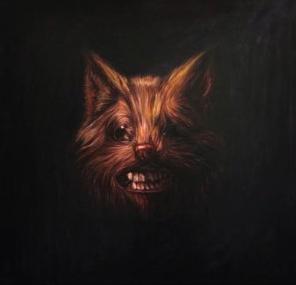
Swans: The Seer (Young God)
The long and acclaimed history of this fabled Lower East Side band gets a new chapter with this two-CD, nearly two-hour studio album. When leader Michael Gira revived Swans after a 13-year hiatus, the result, 2010's My Father Will Guide Me Up a Rope to the Sky, was not a rehash of the band's past styles -- which, summarized simplistically, would be loud, abrasive noise for its first five years, then for the next eleven, a quieter, more nuanced sound (though with equally disturbing lyrics) that emphasized female vocalist Jarboe -- but rather a combination of them. On The Seer, Swans' sound continues to evolve. Gira states, "The Seer took 30 years to make. It's the culmination of every previous Swans album as well as any other music I've ever made, been involved in or imagined."
The most obvious evolutionary change is the great length of several tracks. Over half the album's timing is taken up by three tracks: "The Seer" (32:14), "A Piece of the Sky" (19:10), and "Apostate" (23:01), the latter two closing the album. There's been a lot of droning indie-rock in the past decade; drones are powerfully hypnotic. Gira combines them with the lessons of Minimalism (don't laugh; some of this music sounds like notated compositions, though they aren't) -- slowly evolving patterns are also powerfully hypnotic, perhaps even moreso. "Apostate," however, is more like the band's messy early music, acerbic and forcefully punctuated.
On the other hand, there are concise tracks that are tuneful by Gira's dark standards, along with many that fall in between those two ends of the spectrum, and that variety, which is very much stylistic and not just a matter of length, helped keep me listening raptly through the whole two hours. Even the long tracks partake of that variety; "A Piece of the Sky" in particular is structured like a suite with distinct sections.
Swans is now a sextet (a septet if "Honorary Swan" Bill Rieflin (Ministry) is counted), and there are also many guest contributors, so though the sound here is much cleaner than in the old days, it achieves some of the same density. Not counting Rieflin or the vocalists (more on them shortly), there are thirteen guests; among the sounds they add are contrabassoon, piano, cello, violin, accordion, horns, bagpipes, mandolins, clarinet, and dulcimer (not that the band members don't play several of those instruments as well). The sheer sonic breadth on display here not only adds to the aforementioned variety, it seems crucial to how the music was constructed: through accretion, built up in the studio from its humble beginnings on (hard to believe, but Gira says so) acoustic guitar.
Gira dominates the singing; Jarboe, alas, is only heard on backing vocals, and on only two tracks at that. Also adding background vocals are the guys from Akron/Family (on "A Piece of the Sky"). More prominent are Al and Mimi of Low, who sing with Gira on the album’s opening track, "Lunacy," and Yeah Yeah Yeahs frontwoman Karen O, who takes the lead on "Song for a Warrior," which kicks off Disc 2. I'm speaking of the two-CD version; I don't know if the track order's difference for the three-LP edition. By the way, there's also a special edition that includes a concert DVD; it's only available at shows and on younggodrecords.com.
One could listen to The Seer in a few different ways. The total-immersion, start-to-finish-in-one-sitting way works very well, creating an entire world in which to explore the terrain. One could also split it into three listening experiences of about 40 minutes each: "The Seer" and "The Seer Returns;" all the other shorter tracks; and "A Piece of the Sky" and "Apostate." Or, of course, in these iTunes days, one could just dip into it a track at a time. Since there are no weak links, any approach will satisfy; this is immediately a strong contender for album of the year.
